It doesn’t matter whether you sell physical goods or digital products, selling online in South Africa has never been simpler.
Over the last 10 years, I have worked with and sold on most of the online platforms available to South Africans. I still sell both physical and digital products and have experience working with most of the payment gateways South Africans are able to use to sell online.
This article is a summary of what I have learnt over the last decade of selling online in South Africa…
In order to sell online in South Africa you need three things:
- A product to sell, whether it be physical or digital
- An online platform to sell your product on
- A way to take payments or payment processor
What you are selling online in South Africa will more often than not dictate the platform you choose to sell on. For physical products, platforms like Shopify or Woocommerce amongst others are perfect. While for digital products, the options are endless.
In this post I am going to share with you the best way to start selling online in South Africa.
The first consideration when wanting to sell online in South Africa is to decide what products you are going to sell…

How to sell your products online in South Africa
When choosing to sell your products online, the first thing to take into consideration is whether they are physical or digital products.
The internet has changed the world shops and if a product is able to be transported, you can sell it online (Which is pretty much anything). If you are able to sell a product in person, you will be able to sell it online.
The same applies to selling digital products in South Africa. It’s never been easier to sell things like eBooks, online courses and digital downloads than it is now.
What you are selling online in South Africa will largely dictate whether or not you’ll be able to build a successful online business. Just like selling in the offline world, having a great product matters.
Most people have a product in mind when they decide they want to start selling online in South Africa. (If you don’t have a product to sell online, affiliate marketing is a great place to start if you want to make money online)
It’s the next second two parts of the equation that trip people up.
The good news is, it’s easier than you think to sell online in South Africa right now. The biggest stumbling block when it comes to selling online is choosing which is the best platform to sell on…
…before I get into the best online selling platform in South Africa, let’s look at the options we have:
(The Best) Online selling platforms in South africa
Selling online in South Africa does come with its own unique set of challenges. Even though it’s never been easier, there are still some hurdles we need to get over in order to sell online. The biggest of those hurdles is which payment processor to use. (I’ll cover how to take payments when selling online in South Africa later in this article)
If you’re wanting to sell physical or digital products online, these are the best online selling platforms in South Africa you can use: (Click on any of the links below to learn more about them)
There are many more online selling platforms available to use, but many of them aren’t available to South Africans because they don’t Integrate with South African payment gateways (I’ll explore that later in this article too).
Let’s dig into these online selling platforms in a bit more detail…
Shopify
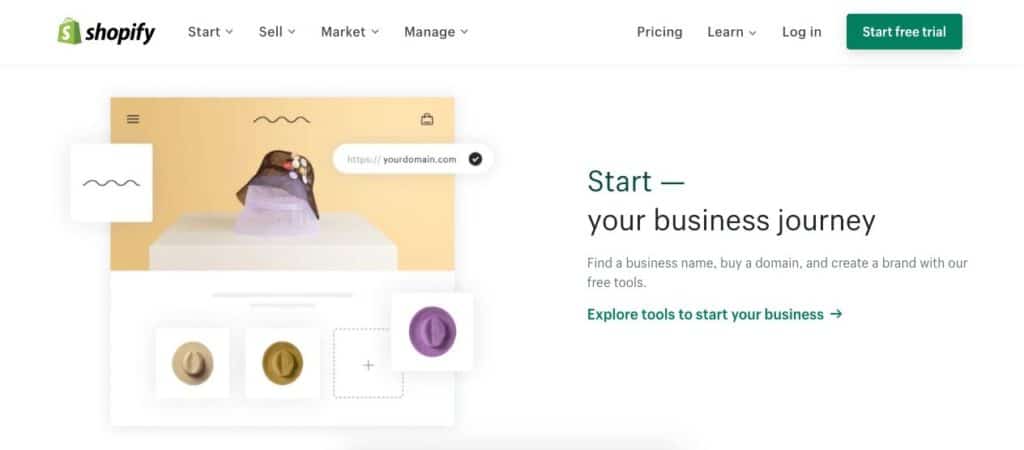
Shopify as an online selling platform has levelled the playing field for anyone wanting to sell products online in South Africa. Creating an online selling platform using Shopify is as simple as it comes.
Even if you are not tech-savvy, Shopify is very easy to set up. Shopify is theme-based which means changing the look and feel of your online selling platform is easy.
Shopify also integrates with most South African payment gateways so taking payments is a breeze too.
One of the disadvantages of using Shopify is that it can become quite expensive. Shopify charges a monthly fee to use the platform and they also take a percentage of your sales revenue.
You can try Shopify for free by clicking here. (I’ve also done a FULL cost breakdown on what Shopify costs to run in South Africa here)
Woocommerce
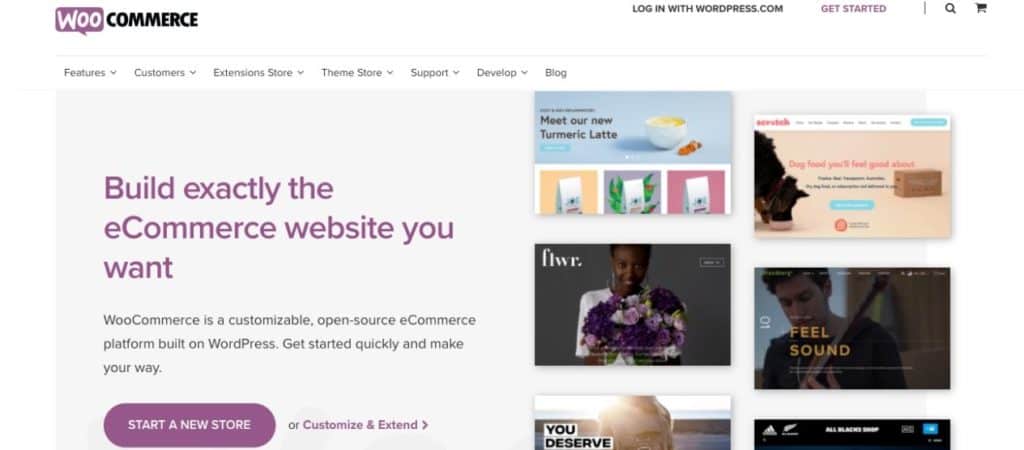
WooCommerce is another giant in the e-commerce or online selling space. Many online selling platforms in South Africa are powered by WooCommerce.
WooCommerce runs off the extremely popular WordPress framework. WordPress is an open-source content management system that you are able to use to build a website. (I have created this free step-by-step tutorial that will show you exactly how to create an online selling platform using WordPress)
The biggest attraction to WooCommerce when starting out selling online in South Africa is that it is free to use. The other big advantage of using woocommerce is that because it is plug-in based It supports almost all South African payment gateways.
There are however two big disadvantages to using Woocommerce. The first one is that in order to get maximum functionality you will need extra plugins. Many of these woocommerce plugins are Premium plugins which means you need to pay for them.
The second disadvantage of using WooCommerce is that the learning curve is quite steep. figuring out how to do things or to customise the look and feel within WordPress can take a lot of time. The money you save up front on not paying for an online selling platform does tend to stack up the longer you use WooCommerce.
You can learn more about WooCommerce here.
Wix
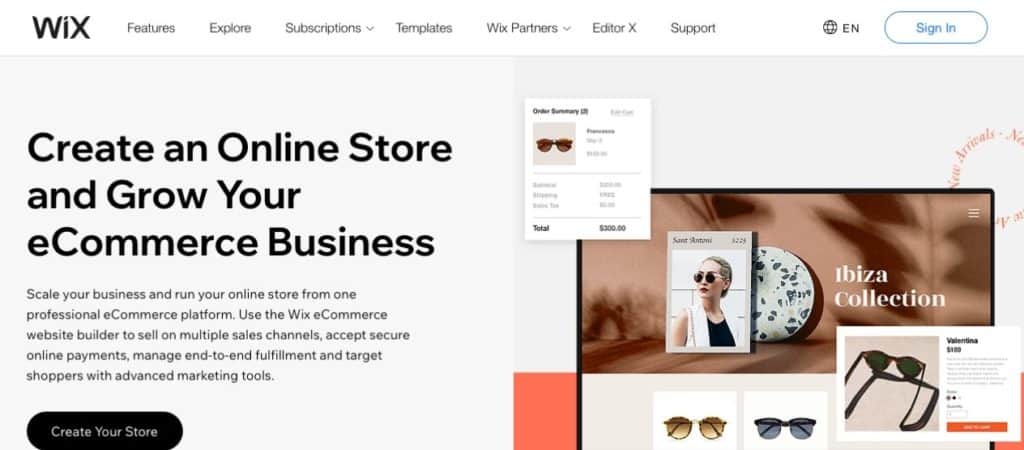
Another very popular online selling platform is Wix. Wix is also template-based and allows you to drop and drag components within those templates to modify the look and feel of your website.
Just like shopify Wix is very easy to use and also integrates with the most popular South African payment gateways.
One of the big advantages of using Wix is that you can start for free. but in order to get access to all the functionality and to have adverts removed you do need to upgrade to one of their premium plans.
It is also important to bear in mind and this is one of the biggest disadvantages of Wix is that you aren’t able to export all your content and products that you sell online in South Africa if you would like to move to a different online selling platform.
You can learn more about Wix and sign up for a free trial here.
Drupal
Brutal is another online selling platform that is available to South Africans wanting to sell their products online. Much like WordPress, Drupal is also an open-source content management system that works on a framework that allows the use of themes and plugins period in
The Drupal ecommerce selling platform is not as widely used as WooCommerce but is fairly robust and allows for modification and customisation.
Just like WordPress and WooCommerce, Drupal is free to use but many of the themes and plugins are premium and will cost you in the long run.
The main disadvantage of using Drupal is that the user base of developers is not as big as a platform like WordPress. Finding someone who can help should you run into any challenges may become a problem.
WP EasyCart
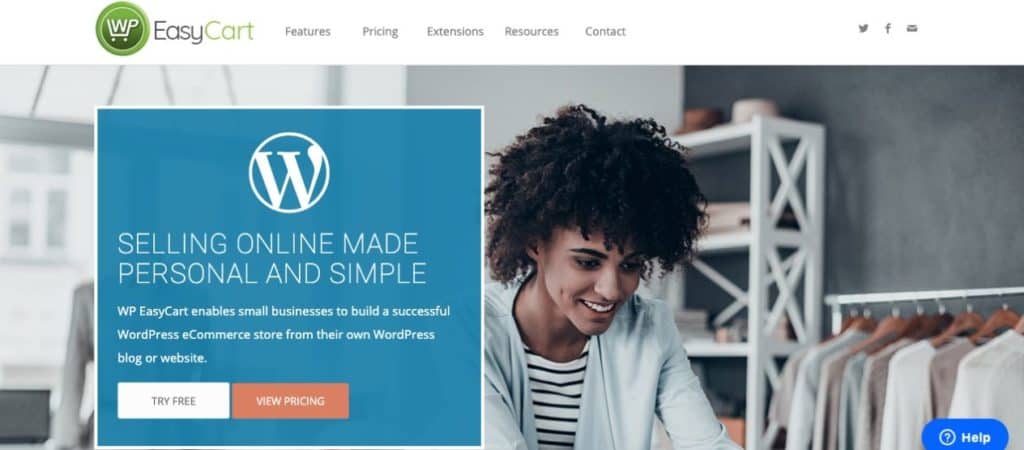
WP EasyCart is another great e-commerce solution that runs on the WordPress framework. WP EasyCart is a great alternative to WooCommerce and also integrates with many South African payment gateways.
WP Easycart Is a premium plugin but does everything you need to be able to sell online in South Africa, out of the box. WP Easycart also integrates with most of the big South African payment gateways, so taking payments when you sell online is not a problem.
When comparing WP Easycart to WooCommerce it’s easy to look at the price tag on WP Easycart and choose to go the WooCommerce route. It is important to bear in mind with WP Easycart that you won’t need to purchase additional plugins to enable you to sell online in South Africa.
You can sign up for a free trail of WP EasyCart here.
Jumpseller
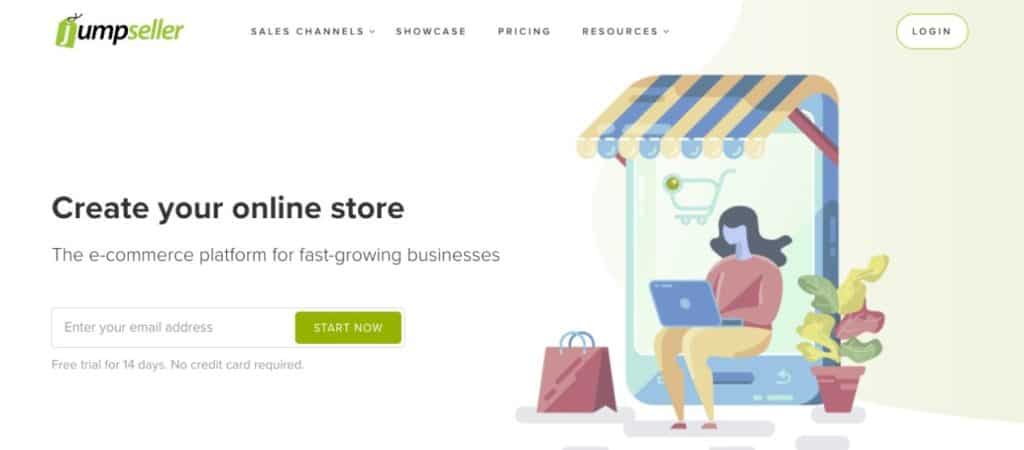
An online selling platform that is available to South Africans that is not as well known as the platforms discussed above is Jumpseler. Just like Shopify, Jumpseller is an out-of-the-box e-commerce solution that allows you to sell your products online with minimal technical skill or requirement.
Jumpseller is slightly cheaper than Shopify but doesn’t have as many bells and whistles. Jumpseller also allows you to change the look and feel of your online selling platform by using themes. Jumpseller is also fully responsive which means your online store looks great on both desktop and mobile.
A big Plus for Jumpseller is they don’t charge additional transaction fees for using their platform as Shopify does.
You can learn more about Jumpseller here.
Site.pro
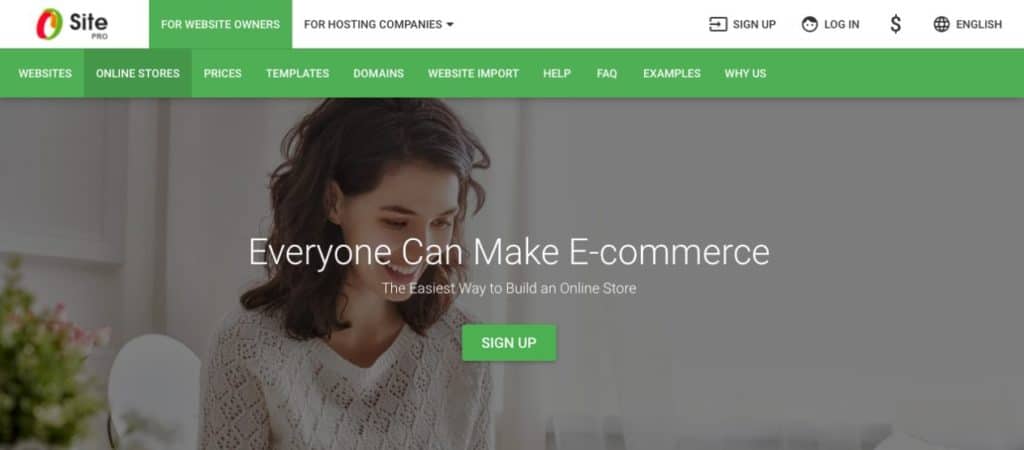
Another option for an online selling platform to look at if none of the options discussed above work for you is Site.pro. Site.pro also integrates with a few of the major South African payment gateways.
Site.pro also has an online website builder which makes it fairly easy to build your online store.
It is one of the cheaper options to use when it comes to wanting to sell online.
You can learn more about Site.pro here.
Another little known way to sell your online in South Africa is by selling on third party marketplaces…
Online marketplaces in South Africa
If you sell physical products a great option to sell online in South Africa is by using websites that allow third-party sellers to sell on their online platform. There are many of these platforms available however not all of them provide great results.
The four big online marketplaces in South Africa to sell online are:
- Takealot
- Makro
- Zando
- Loot
Let’s take a look into each of these online marketplaces in South Africa in more detail.
The Takealot Online Marketplace
Takealot is the largest online retailer in South Africa. They currently have a customer database of 1.8 million customers. In order to sell on the Takealot website you need to apply to through their seller portal.
You can learn more about the Takealot Seller Portal here.
The Makro Makro Online Marketplace
Makro has been a big name in retail in South Africa for a long time. Over the last few years Makro have made a big push into selling online in South Africa. They have also built a third party online marketplace that allows you to sell products on the Makro website.
You can learn more about the Makro seller portal here
The Zando Online Marketplace
Zando is one of the big online clothing retailers in South Africa. Zando also allows clothing brands to sell their products on the Zando website. If you are a clothing brand wanting to sell online in South Africa then joining Zando’s online marketplace is a great place to start.
You can learn more about the Zando Online Marketplace here.
The Loot Online Marketplace
Loot is another one of the big South African online retailers. They started out selling books online but have branched out into many more verticals. If you currently have products that you would like to sell online and are looking for a distribution channel, the Loot online marketplace may be for you.
You can learn more about the Loot Online Marketplace here.
Now that we’ve looked at all the online selling platforms available, it is time to dig into how to take payments when selling online in South Africa…
How to take payments when you sell online in South Africa
Taking payments when you sell online seems like it should be such an easy process. Unfortunately, for South Africans, this is not the case. Just like there are many selling platforms available to us as South Africans, there are also many ways to take payments when you sell online.
Here is the list of the easiest ways to take payments when you sell online in South Africa:
There are many more ways to take payments when you sell online in South Africa (I’ve created this article on the best and cheapest payment gateways in South Africa) but I have listed the 5 easiest ways above. Let’s look at each one of these ways to take payments when selling online in South Africa:
EFT (Electronic fund transfer)
Most online selling platforms allow you the option of an electronic fund transfer or aft as the form of payment. how this works is your customer will make the purchase and select the option to transfer the funds into your bank account. this is a really simple way to take payments when selling online in South Africa but there is one massive risk when taking payments this way.
As an online seller you need to make 110% certain that the money is in your bank account before shipping the product to your customer. there are countless stories of online businesses in South Africa been scammed by customers who have simply sent through fake proofs of payment.
Although this is the simplest way to take payments when you sell online it certainly isn’t the safest.
Cash on delivery
the second way to take payments online is by offering cash on delivery. you would need to partner with a courier company that allows this but it is certainly a simple way to take payments when you sell online.
there is risk here too particularly when selling in the South Africa environment that you could dispatch goods and for whatever reason they go missing in transit you as the online retailer will be out of pocket.
PayFast
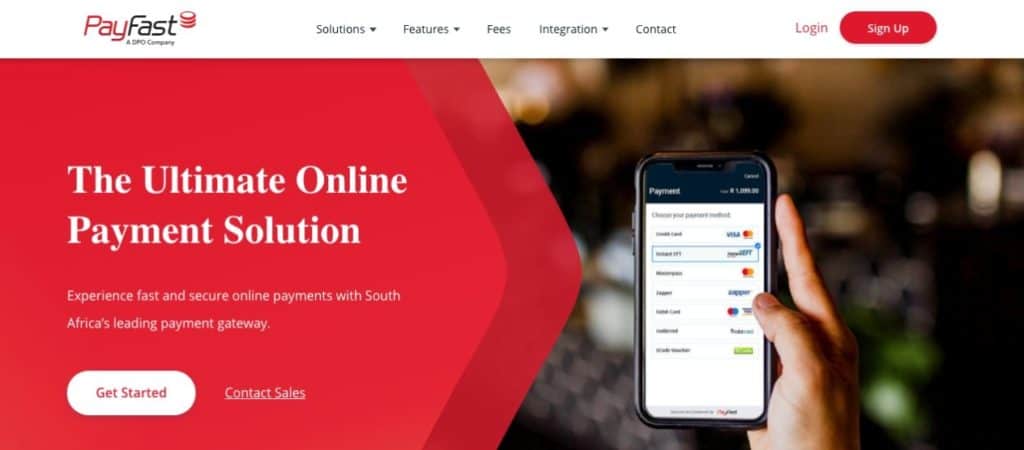
I would suggest using a payment processor take payments online before dispatching any products. one of the most widely used is PayFast.
Payfast integrates with nearly all of the online selling platforms are available to South Africans wanting to sell online. it’s certainly integrate with all the platforms . mentioned in this post.
it is fairly simple to set up a payfast account. Once you are approved to sell online, integrating it with the platform you choose is also easy. The payfast integration documentation is extensive and will walk you through the process.
PayPal
PayPal is another option to take payments when selling online in South Africa. You would need to set up a PayPal account and link it to your South African bank account in order to receive payments. There are some online selling platforms (like teachable for example) that allow you to use their payment processor and they then pay you out in PayPal.
A few things to note when using PayPal to take payments when selling online in South Africa of the following. Because the base currency when you use PayPal is the US dollar, there are a lot of additional fees to take into account. One of which is the cost of converting the US Dollar to Rands.
There are also fees involved when you withdraw money from your PayPal account into your South African bank account. I would use only PayPal as a last resort to take payments when selling online in South Africa.
Snapscan
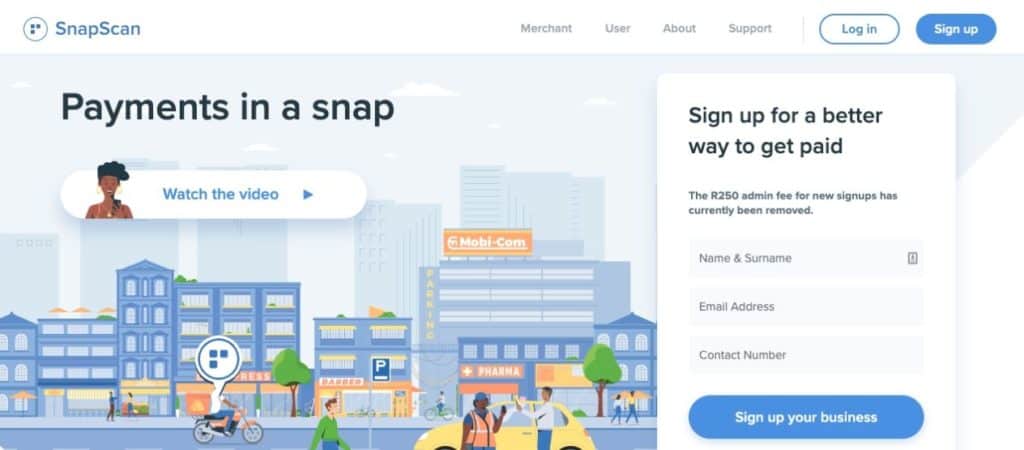
Another simple way to take payments when you sell online in South Africa is to use SnapScan. SnapScan is a free app that your customer can download to the smartphone which allows them to make payments conveniently from their mobile device.
Setting up a Snapscan account is very easy (It’s a simple FICA process) and they also integrate with some of the online selling platforms mentioned above, like woocommerce and shopify.
If you are looking for a payment gateway to use for your online store in South Africa, then here is a list of the best payment gateways in South Africa (And which is the cheapest)
I know this has been a lot to take in but you’re now probably wondering ‘How much is this all going to cost me?’ then I’ve written this article about the cost of running an online store in South Africa that you will find extremely helpful.
I hope this post has helped you on your journey to sell online in South Africa. If you have any questions about how to sell online in South Africa then join our free online community called the South African Online Business Lab.
If you would like to access my free training on the 7 ways to make money online in South Africa, you can do so here or download the list of tools are used to make money online in South Africa right now.
